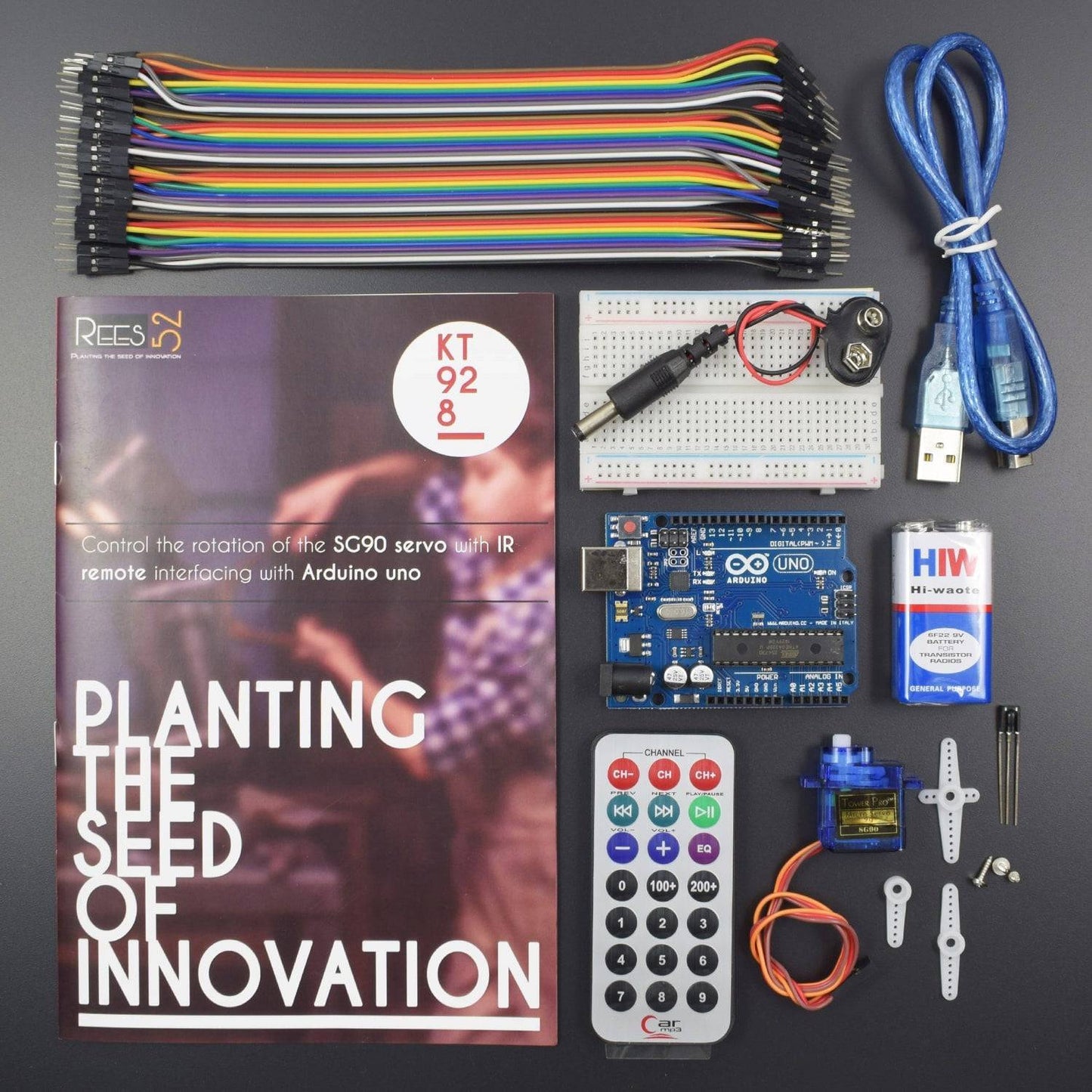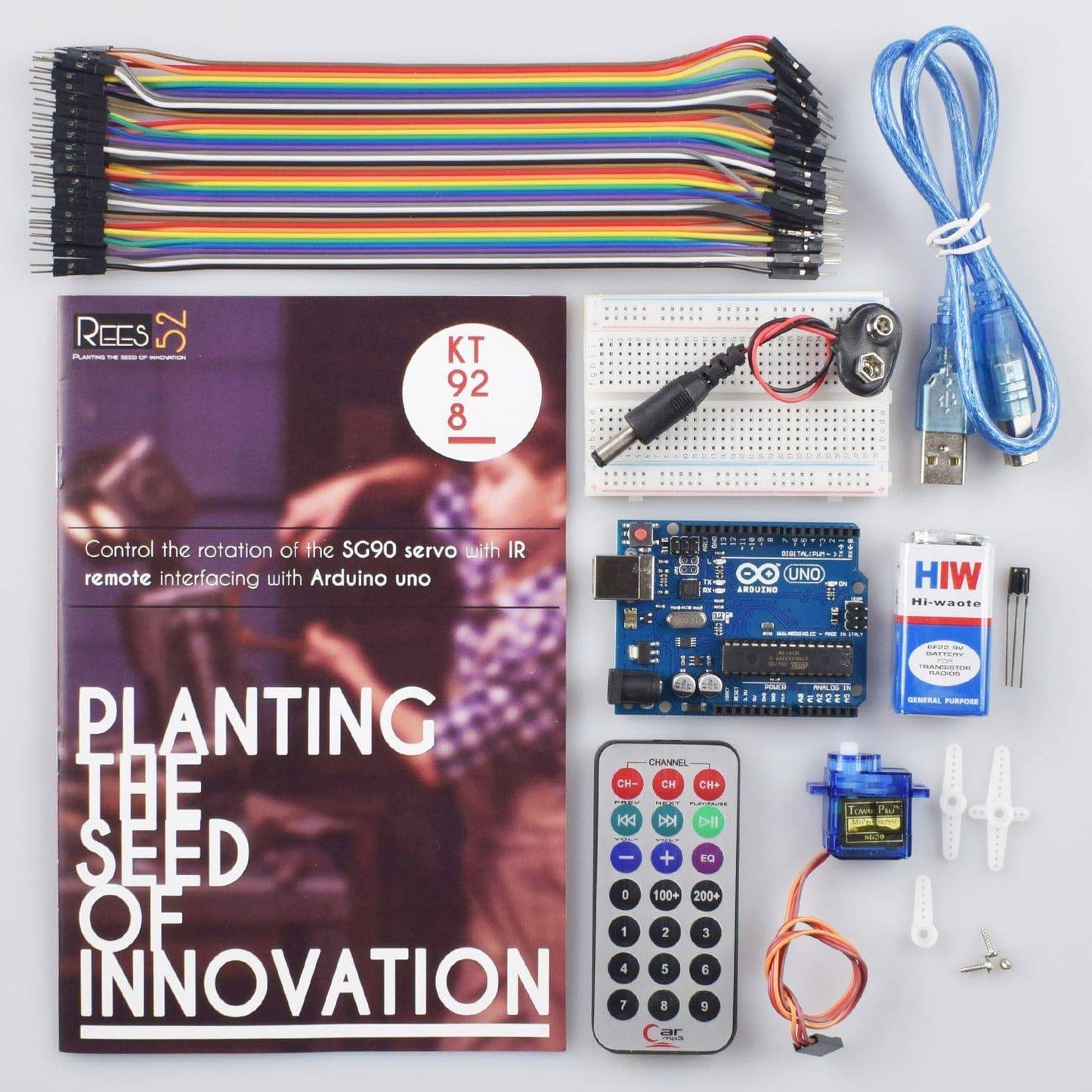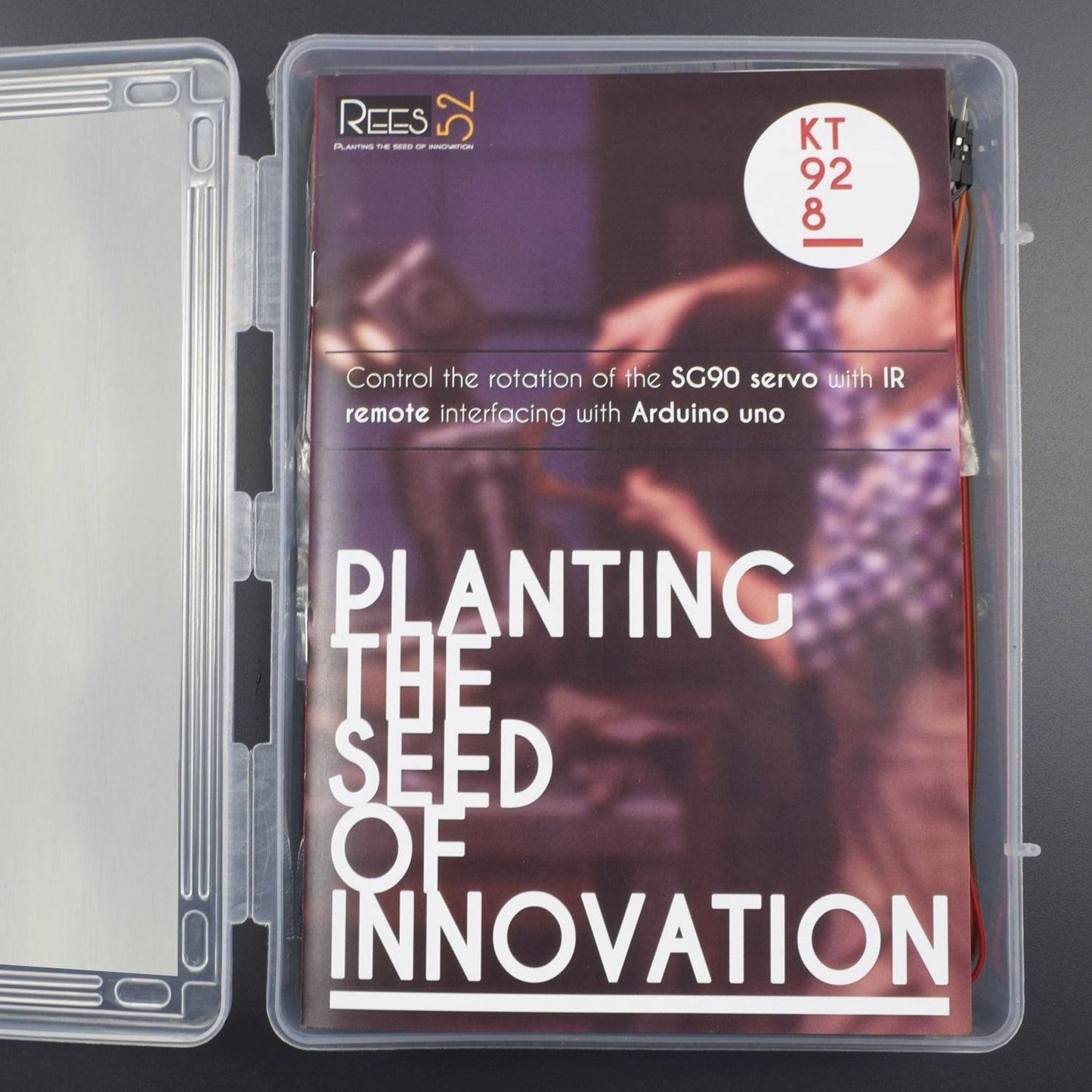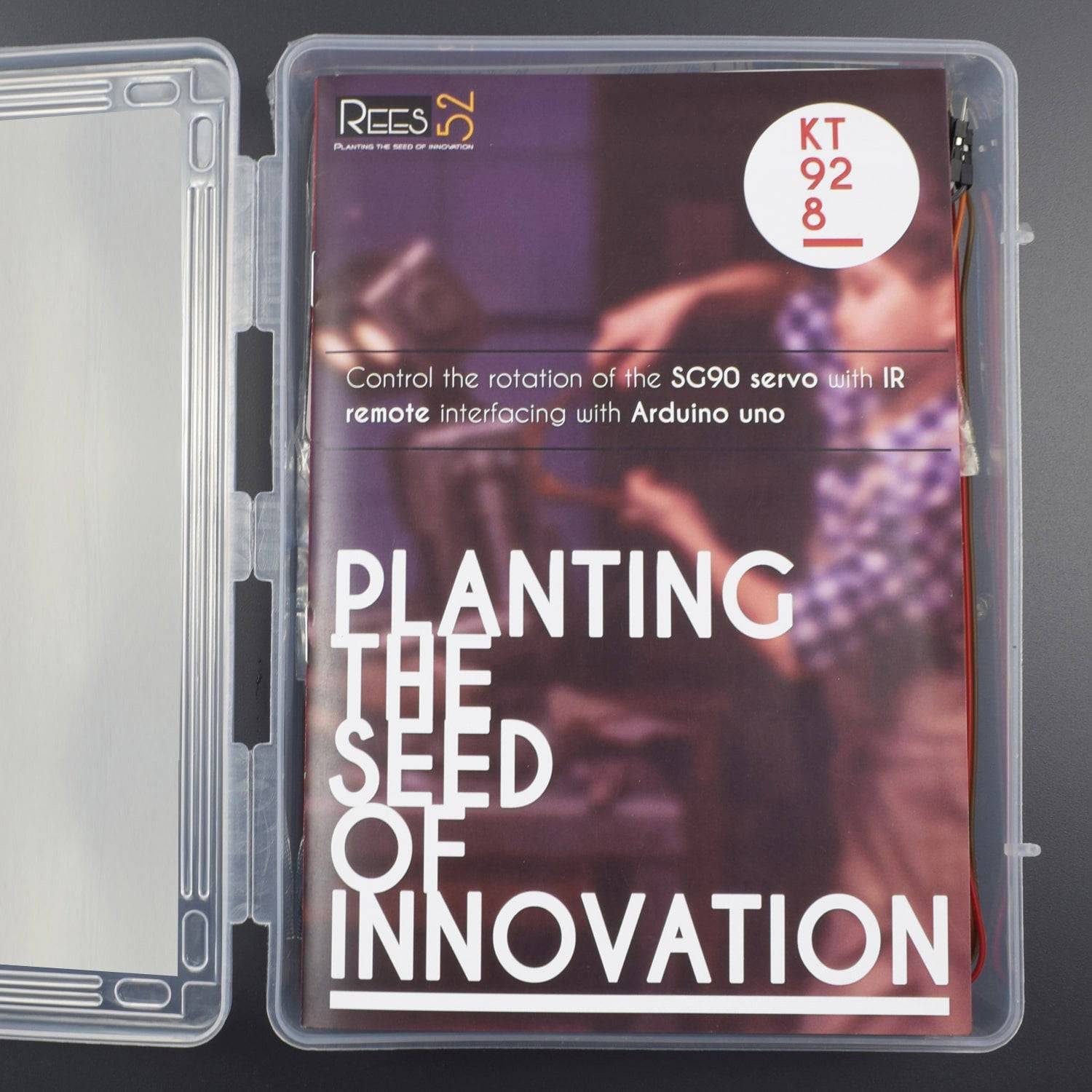


KIT INCLUDES
- Arduino uno with USB Cable - 1
- Servo motor SG-90 - 1
- TSOP IR receiver - 1
- Breadboard 400 points - 1
- 9V battery - 1
- DC Jack - 1
- Jumper wire (male to male) – 40 pieces
INTRODUCTION
In this project, we will control the rotation of the SG90 Servo Motor with the help of IR Remote.
HARDWARE REQUIRED
- Arduino uno with USB Cable - 1
- Servo motor SG-90 - 1
- TSOP IR receiver - 1
- Breadboard 400 points - 1
- 9V battery
- DC Jack - 1
- Jumper wire (male to male) – 40 pieces
SOFTWARE REQUIRED
Arduino IDE 1.8.5 (programmable platform for Arduino)
Click To Download: https://www.arduino.cc/en/Main/Software
PIN DESCRIPTION
SG90 SERVO MOTOR

Connector |
JR and FP connector |
Cable Length |
25 cm |
Operating System |
NO load ; : 0.12 sec / 60 degree (4.8V), 0.10 sec / 60 degree (6.0V)
|
Stall Torque (4.8 V) |
1.6kg/cm |
Temperature |
-30~60'C |
Dead band width |
5 us |
Working Voltage |
3.5~6V |
Dimension |
1.26 in x 1.18 in x 0.47 in (3.2 cm x 3 cm x 1.2 cm) |
Weight |
4.73 oz (134 g)
|
Motor Type |
3 pole |

TSOP IR RECEIVER

An infrared receiver tuned to react only to IR of frequency 38 kHz. This IR sensor module consists of a PIN diode and a pre amplifier which are embedded into a single package. The output of TSOP is active low and it gives +5V in off state. When IR waves, from a source, with a center frequency of 38 kHz incident on it, its output goes low. It is perfect for making obstacle sensors and to accept signals from most IR remotes.
CIRCUIT DESCRIPTION

- Servo positive to breadboard positive rail.
- Servo ground to arduino ground.
- Servo signal to arduino D9.
- Arduino 5v to breadboard positive rail.
- IR receiver Vout to D7 of arduino.
- IR receiver ground to arduino ground.
- IR receiver Vcc to breadboard positive rail.
CODE
Click to see the code or copy the link
WORKING
To control a servo motor with remote control, this will give you a general concept on how to control remotely. You should know that the remote control sends Infrared (IR) signals, so we will learn how to receive and read these signals using Arduino.
We use arduino UNO to control the servo motor to make the functionality we want.
We use IR receiver to read IR signals from remote control.
Wiring IR receiver and servo motor is shown in pictures.
Follow the steps of wiring in the picture given above
Copy the library to Local Disk(C :) > Program Files(x86) > Arduino > libraries
Open IR remote demo example from Arduino IDE as picture 1 then upload to arduino board.
Then open serial monitor and try to click on any button of remote control to send a signal to IR receiver, the HEX code of each button must appear in serial monitor as picture 2

Then detect the HEX code of the buttons using to control the servo motor, assume you will use two buttons of your choice, one for clockwise rotation and another for counter clockwise rotation.
For example, use (+) for clockwise and (-) for counterclockwise, so you have to get their HEX codes.
(+) ---> A3C8EDDB
(-) ---> F076C13B
After uploading the code open serial monitor and Take any remote you want to use or you want the codes off it and press any button.
Now, see in the serial monitor. You will see a code of the corresponding button you pressed. Copy the codes and paste it

In the final code, the functionality is when clicking at any of two buttons the motor is toggling between the rotation in main direction and stop so when first click at any of two buttons the motor will rotate in button's direction, and when the second click at same button the motor will stop
To control a servo motor with remote control, this will give you a general concept on how to control remotely. You should know that the remote control sends Infrared (IR) signals, so we will learn how to receive and read these signals using Arduino.
We use arduino Uno to control the servo motor to make the functionality we want.
We use IR receiver to read IR signals from remote control.
Wiring IR receiver and servo motor is shown in circuit image.
Follow the steps of wiring in the picture given above. In the final code, the functionality is when clicking at any of two buttons the motor is toggling between the rotation in main direction and stop so when first click at any of two buttons the motor will rotate in button's direction, and when second click at same button the motor will stop.






